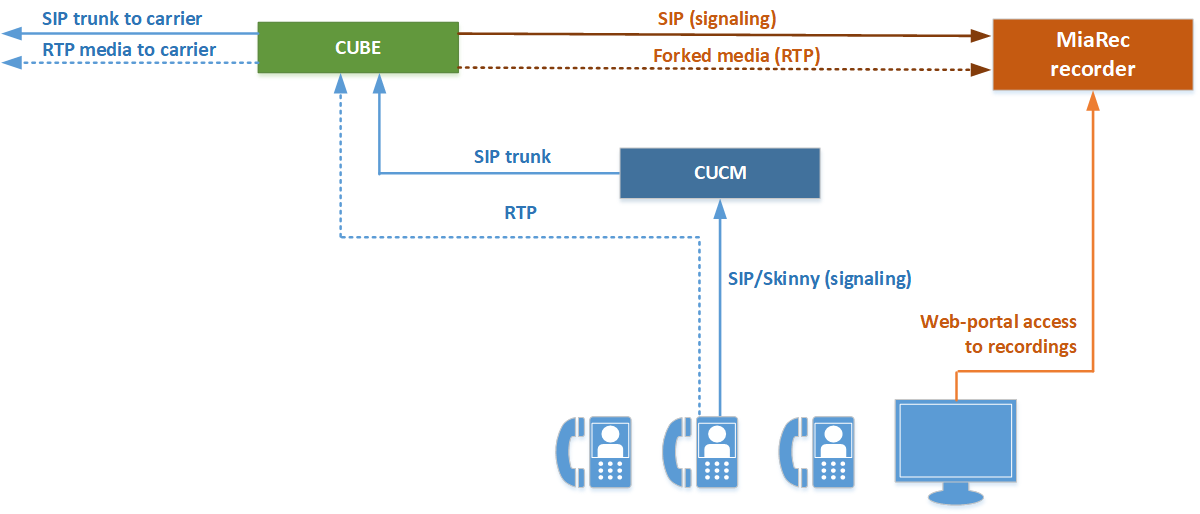Cisco CUBE Network-based Recording Integration
This guide provides instructions for configuring Network-Based Recording on Cisco CUBE.
How it works
The Network-Based Recording is a feature of Cisco CUBE. Cisco CUBE acts as a recording client, while MiaRec acts as a recording server. Recording of a media session is done by sending a copy of a media stream to a recording server (media forking). Metadata is the information that is passed by a recording client to the recording server in a SIP session. The recording metadata describes the communication session and its media streams, and also identifies the participants of the call.

Restrictions for Cisco CUBE Network-Based Recording
Network-based recording is not supported for the following calls:
- Calls that do not use Session Initiation Protocol (SIP). Must be a SIP-to-SIP call flow.
- Flow-around calls.
- Session Description Protocol (SDP) pass-through calls.
- Real-time Transport Protocol (RTP) loopback calls.
- High-density transcoder calls.
- IPv6-to-IPv6 calls.
- IPv6-to-IPv4 calls with IPv4 endpoint.
- Secure Real-time Transport Protocol (SRTP) passthrough calls.
- SRTP-RTP calls with forking for SRTP leg (forking is supported for the RTP leg).
- Resource Reservation Protocol (RSVP).
- Multicast music on hold (MOH).
Recording is not supported if CUBE is running a TCL IVR application with the exception of survivability.tcl, which is supported with network based recording.
Digital Signal Processing (DSP) resources are not supported on forked legs.
Restrictions for Video Recording
- If the main call has multiple video streams (m-lines), the video streams other than the first video m-line are not forked.
- Application media streams of the primary call are not forked to the recording server.
- Forking is not supported if the anchor leg or recording server is on IPv6.
- High availability is not supported on forked video calls.